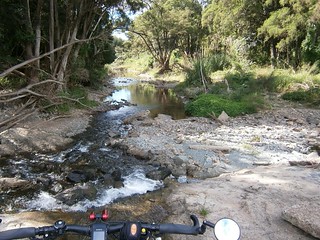
Adare Homestead is a specatuclar rural property which has been owned by the Pinnell family for three generations, and is several kilometres north of Gatton in Queensland’s Lockyer Valley.
The traditional owners of this area are the Kitabul Aboriginal people.
European Explorer, Allan Cunningham first encountered the Kitabul people in 1829 while on an expedition from Ipswich to survey the area. Apparently he was impressed with the strength, and intimidating physical condition of the Kitabul.
A squatter by the name of J.P.Robinson was the first European settler to move to the area, taking up a license for 150,000 acres on what was then called “Laidley’s Plain”.

The Adare Homestead was first established towards the end of the nineteenth century. The grand home was moved there from its original location near lake Clarendon. The original home included seven marble fireplaces and was situated near to the old Cobb and Co route from Ipswich to Toowoomba. In fact you can still see the circular driveway which was built to allow the horse drawn carriages to turn around outside the homestead.
These days, Adare Homestead is better known for Mountainbike Racing. John Pinnell and the folks from The Riders Club at Adare have lovingly built almost 7km of single track around the property which is a pleasure (and a challenge) to ride on.
John very kindly gave his permission for Tony and I to ride there today as part of our larger loop through Lockyer State Forest. I’ve ridden in Lockyer State Forest before, and loved it. So today I wanted to show a friend why I think it’s such a special place.

The trail through the forest up to the summit is a lot of fun with nine creek crossings (you WILL get your feet weet so bring a spare pair of socks), and a tough 5km climb which rises from about 200m above sea level to over 500m above sea level.

The blue skies and clear spring air today meant that we could enjoy some breathtaking views at the top. I think Tony and I both were a bit intimidated by the steep drop-off from this point to the valley below.

At the top of the climb, we had two choices: take the gentle 4wd trail down, or take a steep gnarly “short cut” down. We pondered over our decision for about a millisecond before deciding that “steep and gnarly” beats “gentle” every time.

It’s exhillarating to ride down steep trails. Wallers Road was very rutted in parts, so it was important to chose the right line to make sure we didn’t end up at the bottom of a ditch.

It’s a 9km descent down Wallers Road. The final descent starts out steep and rocky…

…before finally turning into something resembling a fun-park joy ride. Weeeeeee……… 🙂


The sign at the bottom said it all for me. It may look like a warning sign, but it’s actually advertising a fun trail for daredevil mountain bikers.
All up this ride was 38km long. We climbed about 900m and I burned about 2,500 kcal over two and a half hours.
With todays perfect cool weather, I’m rating this one 7 out of 10 on the tough-o-meter. Stronger riders will be able to ride it all. If you’re unsure, you should walk the steeper descents.
Just a reminder: Adare Homestead is private property. That means you can’t go there unless you first contact the owners and get their permission. John Pinnell can be contacted on 0424 057 578.
Total climbing: 997 m
Average temperature: NAN
Total time: 03:09:46
More data




















































































































































































